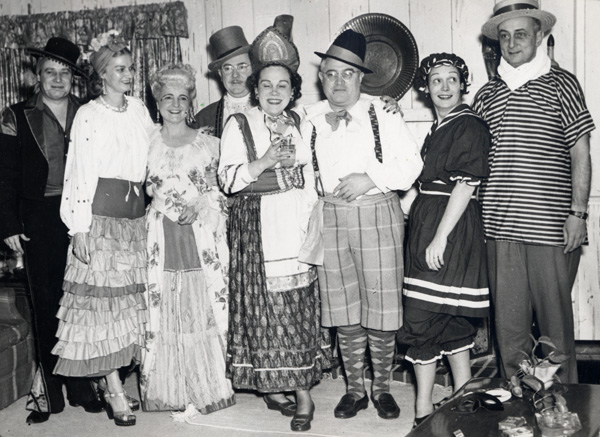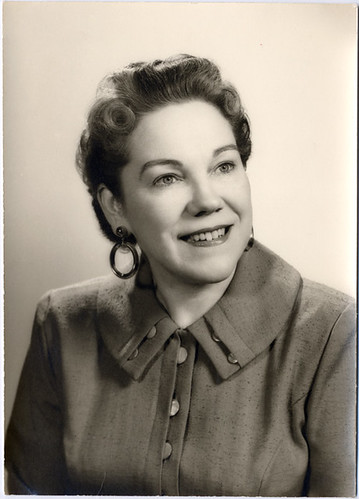
I know lots of people who can foods around this time of year, but I had never done it myself before last Sunday. I’m pretty game for tackling new culinary techniques, even ones with a risk of botulism attached to them, but this was one thing I wanted somebody to hold my hand on the first time I did it. It’s one thing to inspect a piece of coppa to see what’s growing on it, sniffing and poking it yourself, but another to peer into a sealed jar wondering what life and death might be growing inside it.
The estimable Cathy Lambrecht, LTHForum co-founder and whirling dervish of the culinary-historical scene (if you don’t know her from any of those activities, you saw her helping prep raccoon in Sky Full of Bacon #9), is a hardcore canner and, frankly, someone who takes the Jack Webb approach to canning, the rules exist to be followed exactly, just the USDA regs ma’am. So there could have been no better guide for my first foray into canning.
So what got me canning this year? Well, that’s a little bit of a family historical tale.
I’ve posted and even given talks based on the cooking of one side of my family, my mom’s German Mennonite side. I don’t believe I’ve ever mentioned the other side, my dad’s— and at first glance there’d seem to be a reason for that. They were Irish Catholics, not a group noted for fine cuisine, and they were in Kansas in the middle of the 20th century. Steak, meatloaf, hamloaf— that’s pretty much what I remember them eating, and they ate it out as often as they did at home. They had an active social life right up until most of their friends had died, and my dad summed it up with a story he liked to tell about when he was first in the Marine Corps and the recruits were getting a little maudlin about their silver-haired mamas slavin’ over a hot stove. My dad replied that he could see his silver-haired mama slaving over… a hot game of bridge.

Yet Lillian Gebert (nee Davison) was a very good cook for her day, and my mom made sure to save her recipe box when we cleaned out her house (she died in 1990). And surprisingly, though her side didn’t come from a farming background within living memory (her dad was an executive with a department store), she was the one who occasionally made things to can. If she ever canned fruit or vegetables, I don’t remember it, but there were two condiments she made every year as long as she could: honey mustard and piccalilli sauce.
I’ve never felt a need to make the honey mustard— commercial products like East Shore taste exactly like I remember it— but the piccalilli has long been a mystery, tantalizing me. What is piccalilli, you ask? Well, that’s part of the problem: it’s a lot of things. Search for “piccalilli recipe” and you will find quite a range of preserved condiments seemingly with little beyond the idea of pickling in common. At one end it’s a British pickle with a distinct Indian influence, much like chow chows and chutneys; here’s a good example of this kind of British piccalilli, cauliflower and cucumber in a pickle turned bright yellow with turmeric.
Since the name is almost certainly British, that’s probably where it began, but it came to mean something rather different in the American South. Basically, in America it’s a green tomato relish, and became something of a traditional way to use up any green tomatoes still clinging to the vine when winter hit. You might find things like cabbage in it still (as in this recipe), but basically it was a sweet-sour relish made of green tomatoes and green and red peppers, with notes of spices like cinnamon and allspice or cloves.
As the cloves suggest, it goes well on ham, and in fact that’s pretty much all I ever did with it as a kid, put it on ham sandwiches. I’m sort of curious now what else you might do with it. Yet even if my use of it was not terribly sophisticated, it was a pretty bold taste for an 8 or 10 year old to develop a love for, and was probably one of the first genuinely complex things I really appreciated.

So I opened Lilly’s old recipe box, found the recipe, and… nope. It didn’t work that way. The one recipe I wanted was, of course, the one that wasn’t in there. (I have to wonder if, stupidly, I didn’t pull it from the box some years ago, and put it somewhere that it will never be found.) Instead, I had to do some detective work, trying to piece together what was Lilly’s likely recipe based on the tastes and recipes of the time.
I made some suppositions based on memory. It definitely had cinnamon, and I remembered her spending some hours stewing it, so that suggested cinnamon sticks; this was the 60s and 70s, so it probably didn’t have any heat to it, no more than ketchup does. I doubted that she used green tomatoes, that’s a Southern thing we really didn’t know in Kansas much, and she might not have even had red peppers— the color of hers was probably a mix of red tomatoes and the ubiquitous green bell pepper. Clearly it was vinegar-based, both by what I remembered of the taste and because it would need it for preserving, and that obviously implied a lot of sugar and some salt to balance.
Online and in one of Cathy’s many, many vintage midwestern cookbooks, I found a couple of recipes I felt looked right, close enough that I could wing something of my own and make adjustments during the cooking process. Cathy and I picked Sunday to do the canning, and so I set out Saturday with one son driving toward DeKalb, looking for farmstands (I was using enough that it was worth driving out into the country versus paying city farmer’s market prices).
* * *
I chose that direction because I knew another place in the area I wanted to try: Ream’s Market, in Elburn. Elburn is a small town about 15 minutes beyond the edge of Chicago suburbia, and Ream’s is a great little old school butcher shop that answers the question what you do for fun in Elburn: you make sausage all day long. They have an amazing number of different kinds of sausage, most of the bratwurst variety (I picked up a South African style called Boerewors) but including some dry cured salamis (I bought some little finocchino, which are excellent). Not suprisingly, Ream’s is the hub of activity on a Saturday afternoon in Elburn and luckily for me and a hungry boy, there’s a guy with a hot dog cart selling Ream’s incredibly flavorful and smoothly-ground brats and housemade hot dogs.
We continued on Rt. 38 toward DeKalb and saw two farms with farmstands. I drove past the first one to one called Yaeger’s, which had seemed appealing since it also claimed to have Halloween amusements (a corn maze, an inflatable jumping and climbing something or other). Fact was, though, it was pretty small and on a drizzly day, fun looked minimal. So we stuck to acquiring some tomatoes and some corn, plus one pumpkin. Doubling back, we hit the other stand (I don’t remember the name but, hey, it’s the other stand on Rt. 38 between Elburn and DeKalb) and found a much better range of produce. I bought a big box of Roma tomatoes for $12, and some beets as well (I’ve done refrigerator pickles of beets before, but I figured the Romas and the beets would give us something to can while the piccalilli was still stewing). That was all I really saw, this late in the season, that looked like the kinds of thing I’d like to have in my pantry. Relatively cheap produce acquired, we headed back to Chicago to await canning the next day.
Would my piccalilli match up to my memories of Lilly’s? Stay tuned for part 2.

Ream’s Elburn Market
elburnmarket.com
128 N Main St
Elburn, IL 60119-9167
(630) 365-6461


 If you like this post and would like to receive updates from this blog, please subscribe our feed.
If you like this post and would like to receive updates from this blog, please subscribe our feed.




